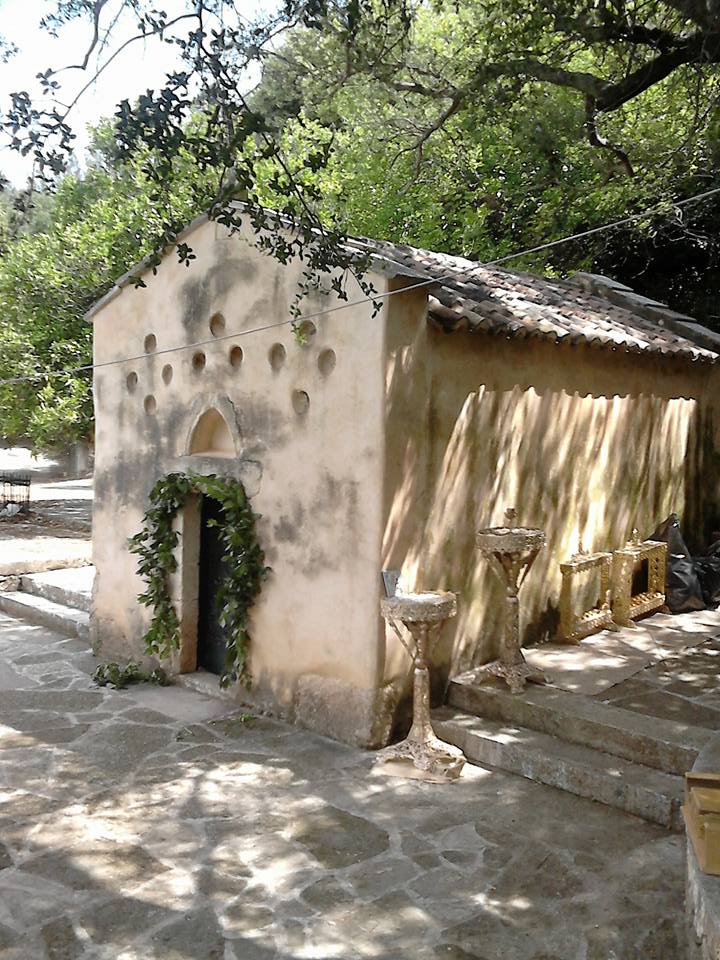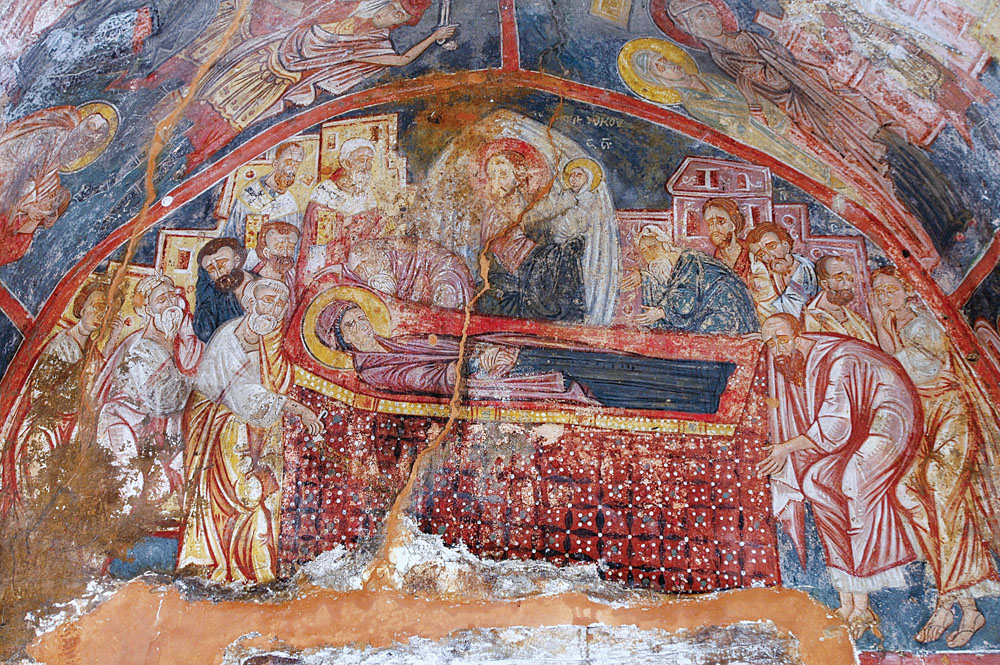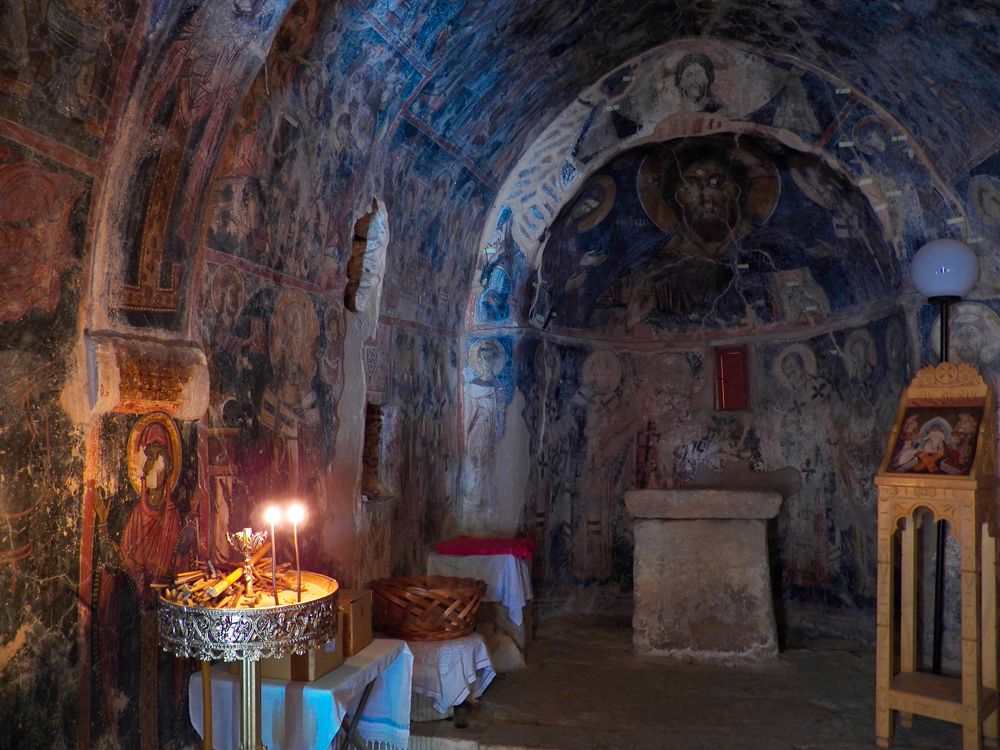Byzantine Churches in Alikampos and Maza, Crete, Greece
The Church of the Koimesis, also known as the Church of the Dormition of the Mother of God (Theotokos), in Alikampos and the Agios Nikolaos Church in Maza are two significant Byzantine churches located in the Apokoronas region of Crete, Greece, each with a rich history and artistic legacy, deeply intertwined through their frescoes and the work of a notable medieval painter, Ioannis Pagomenos. Both churches are located within 5-10 min drive from Halases Panorama Villa.

The Church of the Koimesis is situated near the village of Alikampos. It dates back to at least the early 14th century, with frescoes painted by Ioannis Pagomenos in 1315 - 1316. The church is an example of typical Cretan Byzantine architecture, being a small, single-aisled structure with a barrel vault. The exterior is modest and unassuming, blending into the landscape, but the interior is richly ornamented with vibrant frescoes. These frescoes include detailed depictions of saints and scenes from the Orthodox liturgical year, preserved remarkably well for a monument of its age. Pagomenos' work in this church features iconic figures such as St. Mamas and numerous other saints, painted with delicate craftsmanship that captures the spiritual and artistic sensibilities of the period.
The Church of Agios Nikolaos in Maza, a quiet village also in Apokoronas, is similarly a single-aisle, barrel-vaulted church built around 1324, making it roughly contemporary with the Church of the Koimesis. It also houses frescoes by Ioannis Pagomenos, who is believed to have painted these frescoes around 1325-26 and, according to legend, is buried beneath the church floor. This church's frescoes focus heavily on the life of Saint Nicholas, the church's patron, and include various saints and biblical scenes. Much like the Church of the Koimesis, the frescoes here form a narrative tapestry that reflects Byzantine religious tradition and local devotion. Despite the age and subtle wear of the frescoes, caused by environmental factors and candle smoke, the church remains a crucial repository of Byzantine art on the island.

The connection between these two churches lies primarily in their shared artistic heritage through the work of Ioannis Pagomenos, a celebrated Cretan painter of the Byzantine style. Pagomenos was active in the early 14th century and is known for his fresco cycles in rural churches across western Crete. Both churches exemplify his distinctive style and iconographic programs, highlighting religious themes and saints important to the local population. The similarities in architecture and fresco artistry suggest that these churches were part of a broader cultural and devotional milieu in Crete during the Venetian period, reflecting both the spiritual life and artistic trends of the time.
Thus, the histories of the Church of the Koimesis in Alikampos and the Agios Nikolaos Church in Maza reveal not only the importance of Byzantine religious art in Crete but also illustrate how a single artist's work can link separate communities through shared faith and cultural identity. They stand today as monuments to Crete's rich medieval heritage, drawing scholars, visitors, and devotees eager to experience one of the island's most beautiful and compelling chapters in its artistic and religious history.
For more detailed background and images of the various frescos in the Church of the Koimesis, please visit this blog, and for more detailed background and images of the various frescos in Agios Nikolaos, please visit this page for part 1, and this page for part 2 of the blogs about these Churches by Peter Webscott.


